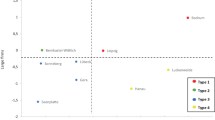Abstract
This paper addresses four questions: What is the extent of the collaboration between the natural sciences and engineering researchers in Canadian universities and government agencies and industry? What are the determinants of this collaboration? Which factors explain the barriers to collaboration between the university, industry and government? Are there similarities and differences between the factors that explain collaboration and the barriers to collaboration? Based on a survey of 1554 researchers funded by the Natural Sciences and Engineering Research Council of Canada (NSERC), the results of the multivariate regressions indicate that various factors explain the decision of whether or not to collaborate with industry and the government. The results also differed according to the studied fields. Overall, the results show that the variables that relate to the researcher’s strategic positioning, to the set-up of strategic networks, to the costs related to the production of the transferred knowledge and transactions explain in large part the researcher’s collaboration. The results of the linear regression pointed to various factors that affect collaboration with researchers: research budget, university localization, radicalness of research, degree of risk-taking culture and researcher’s publications. Finally, the last part of the paper presents the results, and what they imply for future research and theory building.
Similar content being viewed by others
References
Ahire, S. L., S. Devaraj (2001), An empirical comparison of statistical construct validation approaches, IEEE Transaction, 319–329.
Beaver, D., R. Rosen (1978), Studies in scientific collaboration. Part I, Scientometrics, 1: 65–84.
Beaver, D., R. Rosen (1979), Studies in scientific collaboration. Part II, Scientometrics, 1: 133–149.
Beaver, D., R. Rosen (1979), Studies in scientific collaboration. Part III, Scientometrics, 1: 231–245.
Beaver, D. (2001), Reflections on scientific collaboration (and its study): Past, present and future, Scientometrics, 52: 365–377.
Blumenthal, D., M. Gluck, L. K. Seashore, M. A. Stoto, D. Wise (1986), University-industry research relationships in biotechnology: Implications for the university, Science, 232: 1361–1366.
Bush, G. P., L. H. Hattery (1956), Teamwork and creativity in research, Science Quarterly 1: 361–362.
Campbell, T. I. D., S. Slaughter (1999), Faculty and administrators’ attitudes toward potential conflicts of interest commitment, and equity in university-industry relationship, The Journal of Higher Education, 70.
Cohen, W., R. Florida, L. Randazzese, J. Walsh (1998), Industry and academy: Uneasy partners in the cause of technological advance. In: Noll, R. (Ed.), Challenges to Research Universities, The Brookings Institute Washington, DC.
Crane, D. (1972), The Invisible College, University of Chicago Press, Chicago, IL.
Cronbach, L. J. (1951), Coefficient alpha and the internal structure of tests, Psychometrica, 16: 297–334.
Geisler, E. (1995), Industry-university technology cooperation: A theory of inter-organizational relationships, technology analysis, Technology Analysis and Strategic Management, 7: 217–229.
Hagedoorn, J., A. N. Link, N. S. Vonortas (2000), Research partnerships, Research Policy, 29: 567–586.
Harrigan, K. R. (1988), Joint ventures and competitive strategy, Strategic Management Journal, 9: 141–158.
Jewkes, J., D. Sawers, R. Stillerman (1959), The Sources of Invention, St. Martin’s Press, New York.
Katz, J. S., B. R. Martin (1997), What is research collaboration? Research Policy, 26: 1–18.
Kelves, D. (Ed.) (1995), The Physicists: The History of a Scientific Community in Modern America, Harvard University Press, Cambridge, MA.
Kluge, N., C. Oehler (1986), Hochschulen und Technologietransfer. Bedingungen, Konfigurationen und Handlungsmuster. Gesamthochscule Kassel.
Konecny, E., C. P. Quinn, K. Sachs, D. T. Thompson (1995), Universities and Industrial Research, The Royal Chemical Society, Cambridge.
Landry, R., N. Amara (1998), The impacts of transaction costs on the institutional structuration of collaborative academic research, Research Policy, 27: 901–913.
Lee, Y. S. (1996), Technology transfer and the research university: A search for the boundaries of university-industry collaboration, Research Policy, 25: 843–863.
Lee, Y. S. (1996), The sustainability of university-industry research collaboration: An empirical assessment, Journal of Technology Transfer, 25: 111–133.
Meadows, A. J., J. G. O’Connor (1971), Bibliographic statistics as a guide to growth points in science, Science Studies, 1: 95–99.
Meadows, A. J. (1974), Communication in Science, Butterworth, London.
Melin, G. (2000), Pragmatism and self-organization: Research collaboration on the individual level, Research Policy, 29: 31–40.
Meyer-Krahmer, F. (1985), Innovation behaviour and regional indigenous potential, Regional Studies, 19: 523–534.
Meyer-Krahmer, F., U. Schmoch (1998), Science-based technologies university industry interactions in four fields, Research Policy, 27: 835–851.
National Science Board (1996), Science and Engineering Indicators, US Government Printing Office, Washington, DC.
Nunnally, J. C. (1978), Psychometric Theory, New-York: McGraw-Hill.
Porter, M. E. (1980), The Competitive Strategy: Techniques for Analyzing Industries and Competitors, The Free Press, New York.
Porter, M. E. (1985), Competitive Advantage: Creating and Sustaining Superior Performance, The Free Press, New York.
Roessner, D., Y. Lee, P. Shapira, B. Bozeman (1996), Evaluation of Iowa State University’s Center for Advanced Technology Development. Unpublished Paper, School of Public Policy, Georgia Institute of Technology.
Rosenberg, N. (1992), Scientific instrumentation and university research, Research Policy, 21: 381–390.
SRI International (1997), The Impact on Industry of Interaction with Engineering Research Centers, Science and Technology Program, Washington, DC.
Stephan, P. E., S. Gurmu, A. J. Sumell, G. Black (2005), Who’s patenting in the university? Evidence from survey of doctorate recipients, Forthcoming in the Economics of Innovation and New Technology.
Thorsteinsdottir, O. (2000), External research collaboration in two small science systems, Scientometrics, 49: 145–160.
Wen, J., S. Kobayashi (2001), Exploring collaborative R&D network: Some new evidence in Japan, Research Policy, 30: 1309–1319.
Williamson, O. E. (1975), Markets and Hierarchies: Analysis and Antitrust Implication, New York, The Free Press.
Williamson, O. E. (1985), The Economic Institutions of Capitalism, New York, The Free Press.
Author information
Authors and Affiliations
Corresponding author
Rights and permissions
About this article
Cite this article
Belkhodja, O., Landry, R. “The Triple-Helix collaboration: Why do researchers collaborate with industry and the government? What are the factors that influence the perceived barriers?”. Scientometrics 70, 301–332 (2007). https://doi.org/10.1007/s11192-007-0205-6
Received:
Issue Date:
DOI: https://doi.org/10.1007/s11192-007-0205-6




